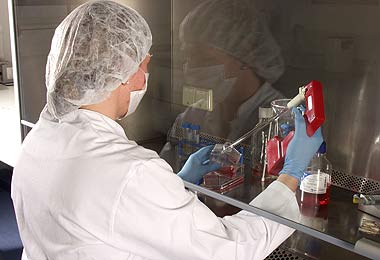 Titanium cookware has gained popularity among home cooks and professional chefs for its durability, non-stick properties, and ability to conduct heat evenly. If you're considering investing in a titanium cookware set for your kitchen but are unsure where to start, this guide is here to help you find the best set for your cooking needs.
Titanium cookware has gained popularity among home cooks and professional chefs for its durability, non-stick properties, and ability to conduct heat evenly. If you're considering investing in a titanium cookware set for your kitchen but are unsure where to start, this guide is here to help you find the best set for your cooking needs.
Benefits of Titanium Cookware Sets
Titanium cookware sets offer a range of benefits that make them a great addition to any kitchen:
Durability
- Titanium cookware is incredibly durable and resistant to scratches and dents.
- It can withstand high temperatures without warping or degrading.
- Most titanium cookware sets come with a long warranty, ensuring their longevity.
Non-Stick Properties
- Many titanium cookware sets are coated with a non-stick surface, making them easy to clean and ideal for cooking delicate foods.
- This non-stick coating also reduces the need for excessive oil or butter, promoting healthier cooking.
Heat Conduction
- Titanium cookware distributes heat evenly, preventing hot spots and ensuring that your food cooks uniformly.
- It heats up quickly and retains heat well, making it efficient for cooking a variety of dishes.
Factors to Consider When Choosing a Titanium Cookware Set
Before purchasing a titanium cookware set, consider the following factors to ensure you find the best set for your kitchen:
Price
- Set a budget for your cookware purchase and look for sets that fall within your price range.
- Keep in mind that while titanium cookware sets may have a higher upfront cost, their durability and performance make them a worthwhile investment.
Pieces Included
- Determine the essential pieces you need in your cookware set, such as frying pans, saucepans, and stockpots.
- Choose a set that includes the right combination of cookware to suit your cooking habits and style.
Non-Stick Coating
- Consider whether you prefer a titanium cookware set with a non-stick coating for easy cleaning and cooking.
- Check the quality of the non-stick coating to ensure it is durable and safe for use.
Handles and Lids
- Look for cookware sets with ergonomic handles that are comfortable to hold and stay cool during cooking.
- Check that the lids fit securely on the cookware pieces to retain heat and moisture while cooking.
Top Picks for Titanium Cookware Sets
Here are some top recommendations for titanium cookware sets based on performance, durability, and value:
Ti-Cerama 11-Piece Ceramic Titanium Cookware Set
- Includes a variety of essential cookware pieces such as frying pans, saucepans, and a stockpot.
- Features a ceramic non-stick coating that is PTFE and PFOA-free for healthier cooking.
- Comes with ergonomic stainless steel handles and glass lids for easy monitoring of cooking.
Anolon Advanced Hard Anodized Nonstick Cookware Set
- Constructed with hard-anodized titanium for durability and even heat distribution.
- Non-stick coating is metal utensil safe and easy to clean.
- Includes a range of cookware pieces and is oven safe up to 400°F.
GreenLife Soft Grip Healthy Ceramic Nonstick Cookware Set
- Made with a ceramic non-stick coating that is free of PFAS, PFOA, lead, and cadmium.
- Soft-grip handles are comfortable to hold and stay cool during cooking.
- Available in a variety of colors to match your kitchen decor.
Caring for Your Titanium Cookware Set
To prolong the life of your titanium cookware set and maintain its performance, follow these care tips:
Hand-Washing
- Hand wash your titanium cookware with mild dish soap and a non-abrasive sponge to prevent scratching.
- Avoid using harsh chemical cleaners or abrasive scrubbers that can damage the non-stick coating.
Storage
- Store your titanium cookware set carefully to prevent scratches and dents.
- Consider using protective pads or cloth liners between stacked cookware pieces to avoid damage.
Usage
- Avoid using metal utensils that can scratch the non-stick surface of your titanium cookware.
- Use wooden or silicone utensils to preserve the integrity of the non-stick coating.







